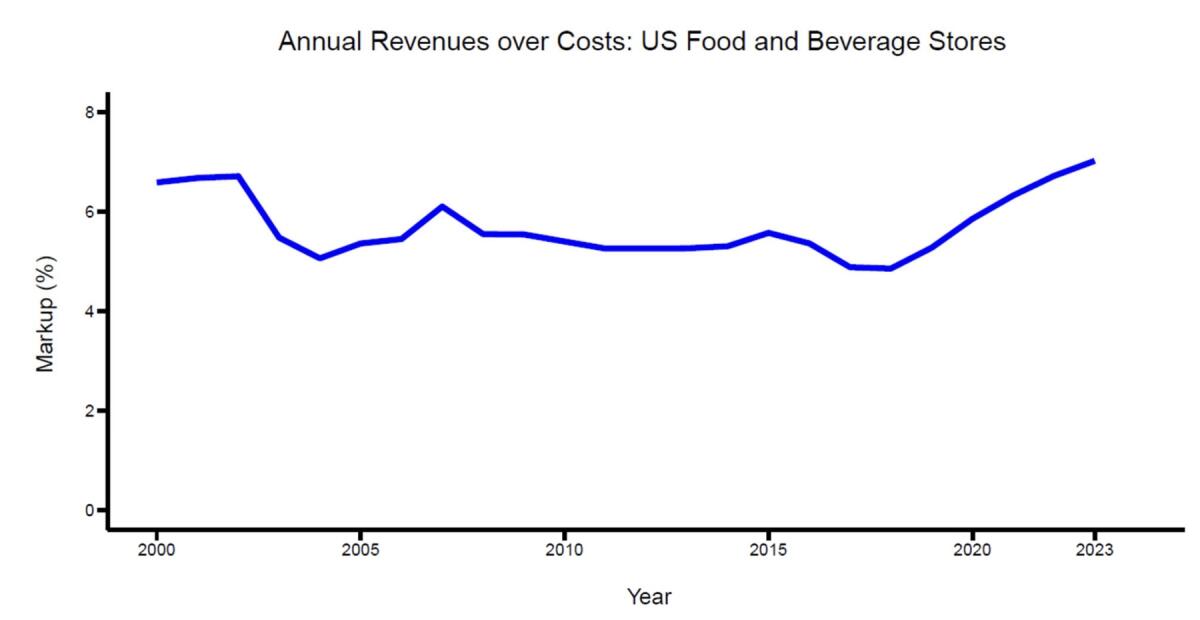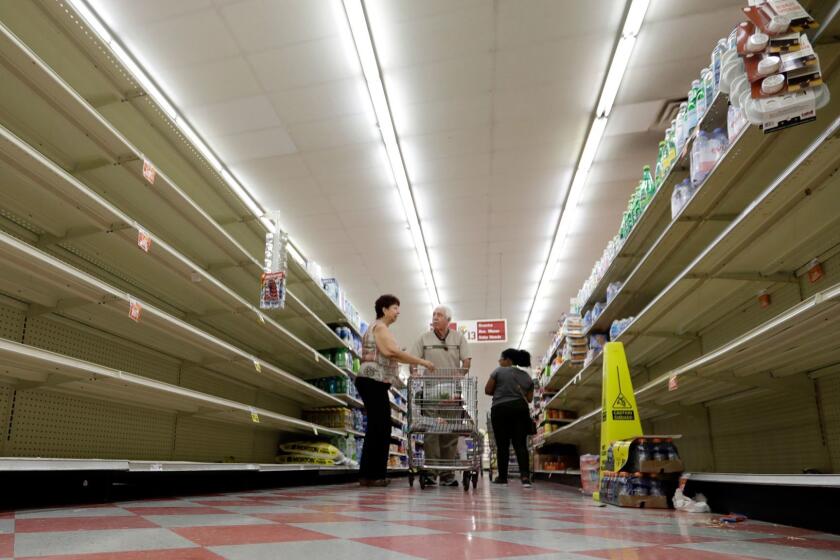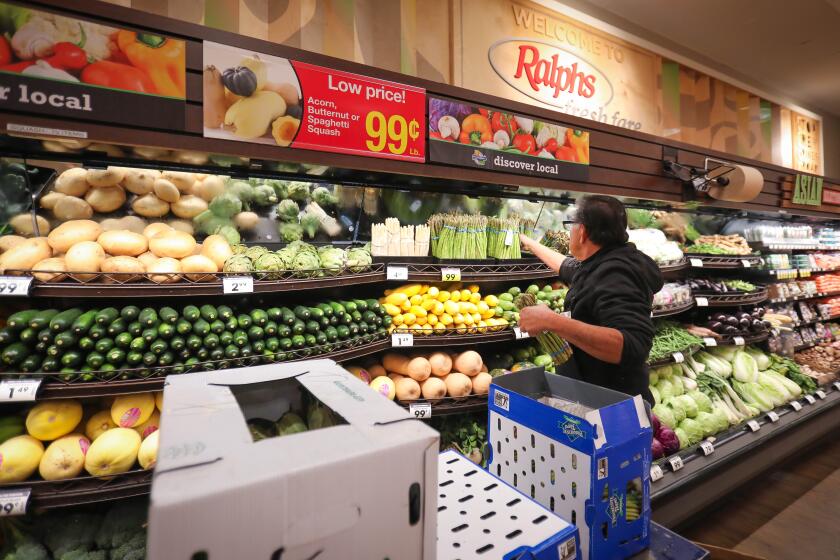Harris is right about housing assistance and price gouging. Here’s what you should know

- Share via
Up to now, Kamala Harris’ presidential campaign has been careful about rolling out its policy initiatives, and — at least in political terms — for good reason.
Policy details at this stage of a campaign do little but give opponents and pundits grist for nitpicking. Most voters aren’t very interested in the details of what a given legislative venture will look like once it goes through the Capitol Hill meat grinder. Political journalists, for their part, seem to be chiefly interested in teasing out holes in the proposal.
For Harris’ campaign, this looks like a lose-lose proposition. After grousing incessantly that Harris hadn’t offered policy specifics since becoming the evident Democratic nominee on July 21, the press has moved on to questioning her intentions, sometimes by seizing on misrepresentations of her actual proposals.
Vice President Harris will ... direct her Administration to crack down on unfair mergers and acquisitions that give big food corporations the power to jack up food and grocery prices.
— Harris campaign
That has been happening since Friday, when Harris issued her first policy “agenda.” This was largely devoted to lowering the cost of housing, food, medical services and child-raising for families, and generated a swell of quibbles in the press and the punditocracy. As it happens, however, Harris is right about the burden of those costs, and right about the best ways to address them.
At this point in an election cycle, presidential campaigns are all about themes and impressions. Harris plainly is setting out a theme of help for an American middle class that has rightly felt neglected by government for decades. Donald Trump’s theme is ... what, beyond whining about how he’s treated?
Get the latest from Michael Hiltzik
Commentary on economics and more from a Pulitzer Prize winner.
You may occasionally receive promotional content from the Los Angeles Times.
Harris’ professed desire to lower food prices led to a spurt of news articles and columns asserting that she was proposing “price controls.”
It’s hard to know where that idea came from; it peaked even before Harris’ policy brief was issued Friday, when the hand-wringers discovered that she was contemplating nothing of the kind.
Some commentators, abetted by the right-wing peanut gallery, may simply have extrapolated from indications that she was targeting price gouging, but that’s on them, not her. (The Murdoch-owned New York Post strained so hard to tag her policies as “Kamunism” that one almost fears that it gave itself a hernia.)
Crypto has had little to brag about this year, but its backers are raising campaign donations in the hundreds of millions of dollars.
The Harris campaign in its formal statement proposed “the first-ever federal ban on price gouging on food and groceries.”
Some commentators pointed out that the average net profit margin for supermarkets is about 1%. They argued that this rules out any indication that Americans had been the victim of gouging by retailers.
Is that so?
It’s true that retail grocery profit margins are in the very low single digits. They always have been. But food retailing is a high-volume business, so margins below 2% can translate into annual profits of — to take just two examples — $1.3 billion (at Albertsons) and $2.2 billion (at Kroger).

That doesn’t mean that the grocers can’t gouge shoppers. After all, they did so during the pandemic.
How do we know this? From their own financial disclosures, which show that Albertsons and Kroger jacked up prices well beyond any increases in their costs.
The pretax profit margin at Albertsons rose from 0.96% in 2019 to 1.62% in 2020 and 2.92% in 2021; it fell back to 2.01% in 2023, once the pandemic appeared to move to the rearview mirror. At Kroger, the margin went from 1.62% in 2019 to 2.54% the following year. It dipped to 1.49% in 2021, but rose again to 1.96% in 2022 and 1.89% last year.
As surely as flooding disasters like Hurricane Harvey are followed by health concerns and homelessness, they’re followed by calls to legalize price gouging.
Nothing can explain the pandemic-era spike in profits better than these companies raising prices faster than their costs. In other words, gouging.
The Federal Trade Commission said so, without using the term. It found that food and beverage retailer revenues rose to 7% over total costs during the pandemic, well beyond “their recent peak of 5.6 percent in 2015.” That trend, the FTC reported, “casts doubt on assertions that rising prices at the grocery store are simply moving in lockstep with retailers’ own rising costs.”
Even beyond the food sector, as I reported earlier, corporate profiteering was unmistakably a significant contributor to inflation over the last few years. That was the conclusion of a team at the Federal Reserve Bank of Kansas City, who reported that markup growth “could account for more than half of 2021 inflation.” The annualized inflation rate reached 5.8% that year.
Notwithstanding the ginned-up controversy over Harris’ anti-gouging initiatives, it’s proper to note that price gouging and its country cousin, price-fixing, have traditionally been a bipartisan concern.
Albertsons and Kroger say their merger would benefit consumers. The history of mergers, in the grocery business and elsewhere, offers cause for skepticism.
In 2020, Donald Trump issued an executive order to prevent gouging on health and medical resources, which makes his claim that Harris’ initiatives on prices are tantamount to “communism” seem more than a teensy bit hypocritical.
In the food sector, Republicans and Democrats in Congress last year took aim at price-fixing in the meat packing business. In 2022, StarKist pleaded guilty to price-fixing on tuna and paid a $100-million fine; Bumble Bee had also pleaded guilty and its former chief executive was sentenced to a prison term.
One linchpin of Harris’ attack on food prices is closer scrutiny of consolidation in the food industry. “Vice President Harris will ... direct her Administration to crack down on unfair mergers and acquisitions that give big food corporations the power to jack up food and grocery prices,” the campaign stated.
If you’re an executive of Kroger and Albertsons, you can probably figure out that she’s talking about you. Those grocery giants are trying to push through a gargantuan $24.6-billion merger that, like all such mergers, will almost certainly produce higher prices at the checkout conveyor. The Harris campaign telegraphed that she will give the Federal Trade Commission more authority to chase bad actors in the food sector. The FTC already has sued to block the merger, and it’s a fair supposition that under a President Harris the agency won’t be backing off.
On housing, Harris is proposing $25,000 in down-payment assistance for first-time home buyers, with special attention for first-generation buyers. Her campaign didn’t specify how that assistance would be delivered, but did project that more than 4 million first-time buyers would be eligible over four years.
As surely as flooding disasters like Hurricane Harvey are followed by health concerns and homelessness, they’re followed by calls to legalize price gouging.
This proposal generated cavils in the chattering classes that it would drive home prices up to absorb the $25,000 grant, putatively keeping homes out of the reach of the beneficiaries.
A couple of points are germane here. One is that government-sponsored down-payment assistance programs are in place in all 50 states and the District of Columbia. The difference in Harris’ proposal is that it would be federalized and somewhat more generous than many state programs.
Pundits who claim that the proposal would drive prices higher must not know much about how the housing market works. First, fewer than one-third of home buyers are first-time buyers.
Sellers who assume that all their bidders are sitting on $25,000 in government cash risk pricing their homes out of a market in which two-thirds are using their own resources.
Budget hawks at the Committee for a Responsible Federal Budget, which was founded with money from a hedge fund billionaire, fretted that the down-payment proposal would raise the federal deficit by $100 billion over 10 years, at least.
To put this in perspective, consider the biggest federal giveaway to homeowners, the mortgage interest deduction from federal income tax.
The Child Tax Credit is very good at reducing child poverty. By giving it no love, Congress is undermining the long-term strength of America’s workforce.
This deduction costs the Treasury about $30 billion a year; if the increase in the standard deduction enacted in the Republicans’ Tax Cuts and Jobs Act of 2017 expires as scheduled next year, the cost of the mortgage deduction will soar to $84 billion in 2026, according to the congressional Joint Committee on Taxation.
Unlike the down-payment assistance contemplated by Harris, the deduction on home mortgage interest and points is heavily skewed toward the wealthy.
More than 63% of its claimants in tax year 2018, the most recent for which the IRS provides statistics, had incomes higher than $100,000; the $123 billion of deductible interest and points they reported to the IRS was 73% of the total.
More to the point, the mortgage interest deduction is a lousy tool for spurring home ownership, which supposedly is the goal of such tax breaks. That’s because it is “targeted at the wealthy, who are almost always homeowners,” as Harvard economists Edward L. Glaeser and Jesse Shapiro observed in 2003.
For middle- and low-income Americans, on the other hand, the No. 1 obstacle to home ownership is the down payment. Helping those households buy a house is tantamount to the government putting its money where its mouth is.
During an impromptu encounter with the press Sunday, Harris rightly described her initiatives as investments, not spending. Consider her remarks about the child tax credit, on which she proposes to restore to the level of up to $3,600 per child enacted in the Biden administration’s American Rescue Plan, and to raise to $6,000 for the first year of a child’s life.
“The return on investment in terms of what that will do and what it will pay for will be tremendous,” she said.
She’s right: In 2021, when the higher credit was enacted, the credit reduced the child poverty rate by about 30%, keeping as many as 3.7 million children out of poverty by the end of that year. When the enhancements expired in January 2022 and the credit fell to $2,000, the child poverty rate spiked to 17% from 12.1%, plunging those 3.7 million children back under the poverty line.
This is the program that Sen. JD Vance, the GOP candidate for vice president, claims to love. But when a raise in the program came up for a vote in the Senate earlier this month, Vance didn’t even bother to show up to vote.
More to Read
Get the latest from Michael Hiltzik
Commentary on economics and more from a Pulitzer Prize winner.
You may occasionally receive promotional content from the Los Angeles Times.














